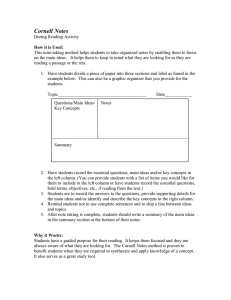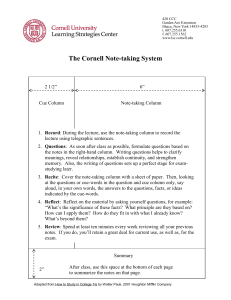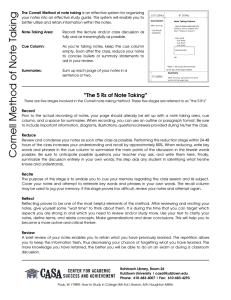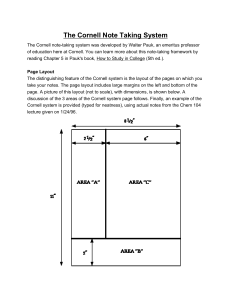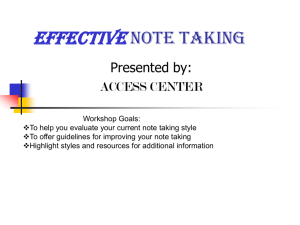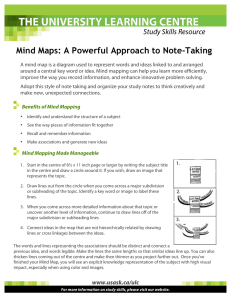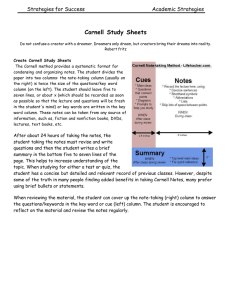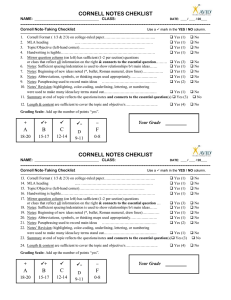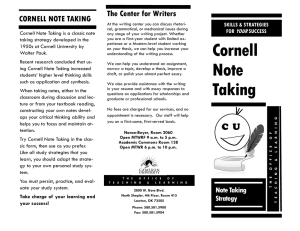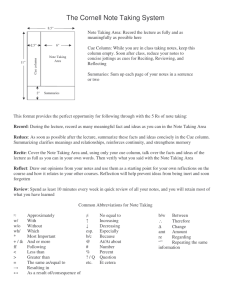Document 12076595
advertisement
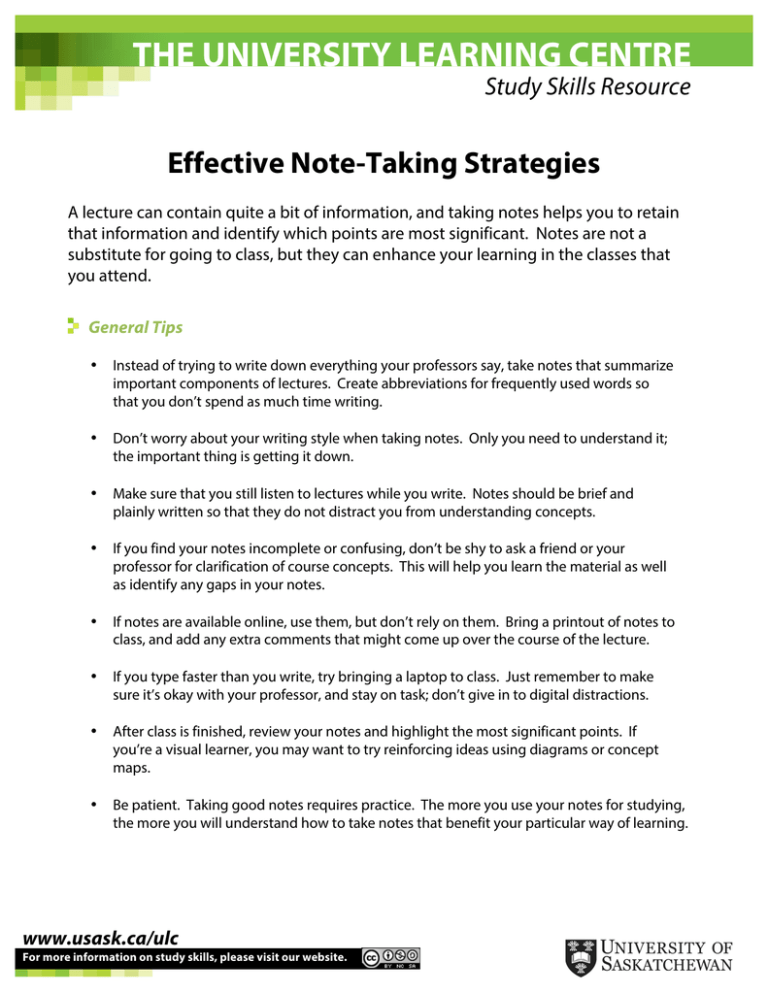
THE UNIVERSITY LEARNING CENTRE Study Skills Resource Effective Note-Taking Strategies A lecture can contain quite a bit of information, and taking notes helps you to retain that information and identify which points are most significant. Notes are not a substitute for going to class, but they can enhance your learning in the classes that you attend. General Tips • Instead of trying to write down everything your professors say, take notes that summarize important components of lectures. Create abbreviations for frequently used words so that you don’t spend as much time writing. • Don’t worry about your writing style when taking notes. Only you need to understand it; the important thing is getting it down. • Make sure that you still listen to lectures while you write. Notes should be brief and plainly written so that they do not distract you from understanding concepts. • If you find your notes incomplete or confusing, don’t be shy to ask a friend or your professor for clarification of course concepts. This will help you learn the material as well as identify any gaps in your notes. • If notes are available online, use them, but don’t rely on them. Bring a printout of notes to class, and add any extra comments that might come up over the course of the lecture. • If you type faster than you write, try bringing a laptop to class. Just remember to make sure it’s okay with your professor, and stay on task; don’t give in to digital distractions. • After class is finished, review your notes and highlight the most significant points. If you’re a visual learner, you may want to try reinforcing ideas using diagrams or concept maps. • Be patient. Taking good notes requires practice. The more you use your notes for studying, the more you will understand how to take notes that benefit your particular way of learning. www.usask.ca/ulc For more information on study skills, please visit our website. Effective Note-Taking Strategies – Page 2 Study Skills Resource The Cornell or 2 Column Method1 • Divide your page into two columns, with the one on the right being a little more than twice as large as the one on the left. • Use the right column to take notes during class, starring the points that you find most significant. • After class, write cue words in the left column for every significant point. Each cue should connect to each point. For example, if you took notes for a lecture on the laws of derivatives, you might have cues like “power rule” or “quotient rule.” • When studying, place flash cards over the information in the right column. Try to recall this information by using the cues in the left column. • If you are able to say the information aloud, then you probably know it. To be sure, try to come up with applications of the information. In the example used above, you might try to solve a problem where the power or quotient rule is applicable. Examples of the Cornell Method: Copernicus Copernican model of sol. sys. places sun at centre Sonnet Shakes. Sonnets have 3 quatrains then a couplet Derivation Derivation is the rate of change of a function Remember that taking notes effectively depends on the learning style of the individual. Some people need notes in order to learn class material; others learn more efficiently when they spend their energy listening to the lecture. The most important thing, as with any study skill, is to experiment with different styles and find what works best for you Experiment, and Be Creative! ______________________ 1 For more information on the Cornell and other methods of note taking, visit http://sas.calpoly.edu/asc/ssl/notetaking.systems.html www.usask.ca/ulc For more information on study skills, please visit our website.
